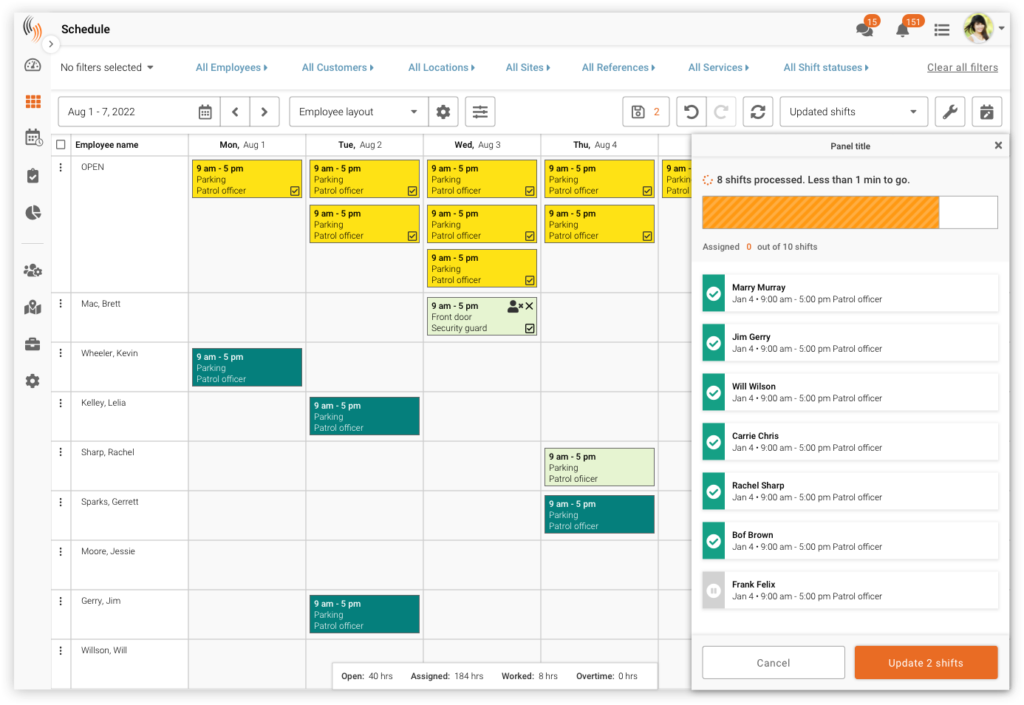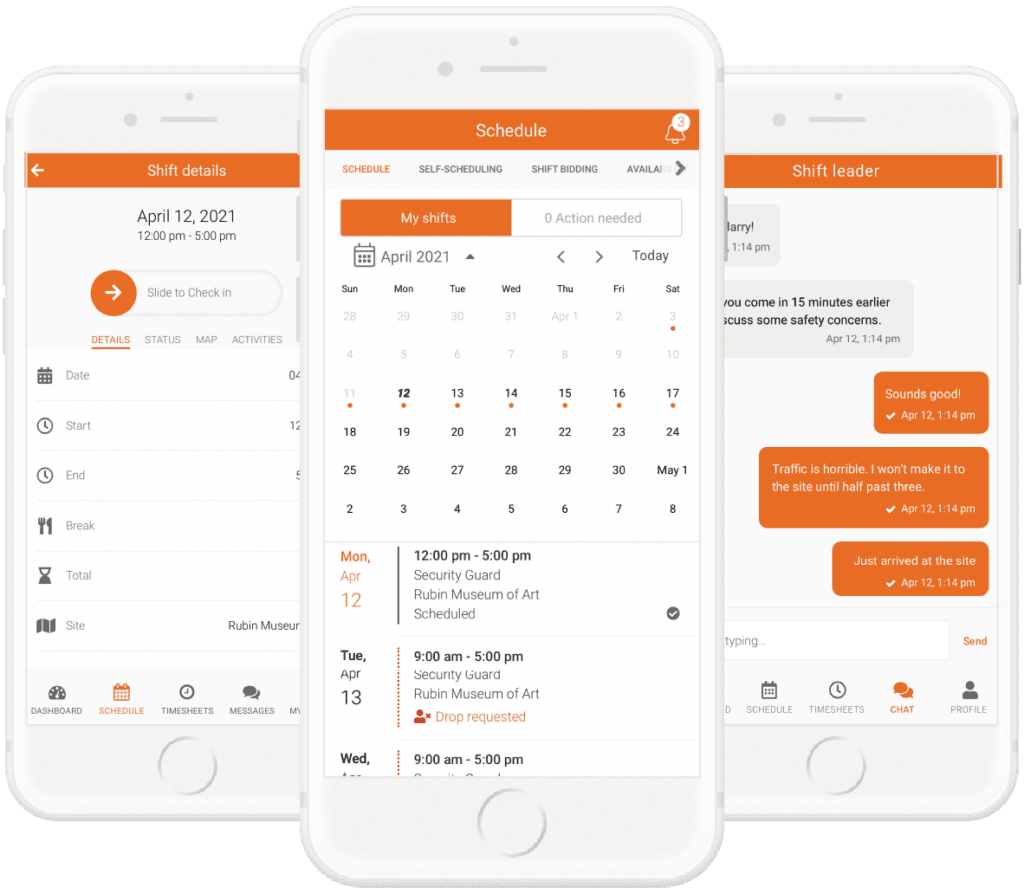In a world filled with responsibilities and commitments, mastering the skill of weekly planning can be a game-changer. Weekly planning can transform chaos into order, confusion into clarity, and unproductive days into highly efficient ones. This comprehensive guide will take you through the importance of designing an efficient weekly schedule, creating one, and how Celayix can streamline employee scheduling for your business.
The Significance of Weekly Schedules: Weekly Planning
Start Weekly Planning – Know Why It’s Important

Every successful endeavour begins with a plan. Whether walking your dog or launching a company, a well-structured weekly schedule can make all the difference.
What is Weekly Planning?
Weekly planning is organizing your activities and tasks for the week ahead. It can be as simple as jotting down a to-do list or as intricate as prioritizing tasks based on importance and urgency. The key is that it gives you a roadmap for your week, ensuring you’re in control of your time.
Why It’s Important to Plan Your Week
Consistently planning your week offers several invaluable benefits:
- Awareness: Knowing what’s on your schedule helps avoid conflicts and prepare you for important events.
- Prioritization: Weekly planning encourages you to say no to less important activities, allowing you to focus on your priorities.
- Work-Life Balance: Maintaining work and personal life balance is crucial for overall well-being.
- Productivity: Effective planning increases productivity by ensuring you’re working on the right tasks.
- Stress Reduction: By planning your week, you prevent last-minute crises and reduce stress.
Steps to creating your weekly schedule
Creating an efficient weekly schedule is a skill that can significantly enhance your productivity and overall well-being. Let’s delve deeper into the steps and strategies for crafting a well-organized weekly schedule that benefits employers and employees.

Step 1: Get Ahead
Planning your week before it kicks off is like having a roadmap for your success. This proactive approach allows you to understand what lies ahead clearly and prepares you mentally and logistically. Did you know that according to a study by the National Sleep Foundation, businesses with flexible scheduling options reported increased employee satisfaction and reduced absenteeism, which can positively affect productivity? By getting ahead, you ensure ample time to prepare for upcoming events, commitments, and tasks, reducing last-minute rushes.
Step 2: Schedule Everything
One of the cornerstones of effective scheduling is to put every task and commitment on your calendar. This visual overview provides a snapshot of your entire week, allowing you to stay organized and on track. Whether you’re an employer managing shifts or an employee juggling multiple responsibilities, having everything scheduled ensures that everything runs smoothly.
Step 3: Know Your Top Priorities
Identifying your top priorities is crucial for both employers and employees. It’s about recognizing and dedicating focused time to the most critical tasks that need your attention. Did you know that an article in the Harvard Business Review highlighted that effective scheduling can lead to a 10-20% increase in overall productivity, benefiting both employers and employees? Prioritizing tasks based on their significance is the essence of productivity and effectiveness. This step ensures that you’re busy and making meaningful progress.
Step 4: Create a Checklist
Maintaining a detailed checklist is your secret weapon for staying organized during the week. This checklist should encompass every task and duty you need to accomplish. It provides a comprehensive view of your workload, enabling better organization and ensuring no important task slips through the cracks.

Step 5: Plan Mellow Times
In the hustle and bustle of the workweek, carving out mellow times is essential. These pockets of buffer time between tasks and commitments serve multiple purposes. They prevent you from rushing, reduce stress, and offer a cushion for unexpected delays. In the context of employee scheduling, they allow for smoother transitions between shifts and tasks, promoting a less stressful work environment.
Step 6: Allocate Time for Unplanned Events
Life is unpredictable, and surprises are inevitable. Both employers and employees should set aside dedicated time in their schedules for unforeseen events or emergencies. This allocation ensures you can handle unexpected situations without feeling overwhelmed or sacrificing other commitments.
Step 7: Health & Exercise Slot
A healthy body is the foundation of productivity and overall well-being. Employers and employees alike should reserve a daily slot for physical exercise. Regular exercise maintains bodily health and boosts mental clarity and productivity. According to the American Psychological Association, employees with control over their schedules experience less job stress and increased job satisfaction. This practice is a wise investment in your long-term success.

Step 8: Be Specific & Detailed
To ensure that your weekly schedule is effective, it’s crucial to be specific and detailed in defining your daily tasks. This includes outlining subtopics and relevant details that streamline your workflow. For employers managing shifts, clear task descriptions help employees understand their roles better, reducing confusion and enhancing performance.
Step 9: Focus on Small Improvements
Consistency is the key to success when it comes to scheduling. Both employers and employees should concentrate on making minor, incremental improvements to their weekly schedules over time. Just as with any long-term goal, gradual enhancements lead to significant advancements in efficiency and effectiveness.
Step 10: Record Results Weekly

Tracking your progress is essential for assessing your development and maintaining accountability. Whether you’re an employer evaluating your scheduling practices or an employee monitoring your productivity, weekly progress reports provide valuable insights. They also serve as a source of motivation, helping you stay committed to your weekly goals.
Step 11: Allow for Miscellaneous Activities
Lastly, embracing flexibility is essential in any well-structured weekly schedule. Leave room for unexpected tasks and activities that may arise during the week. Both employers and employees should adapt and adjust their schedules to accommodate these miscellaneous events while staying on course toward their primary objectives.
In conclusion, effective weekly scheduling is a skill that empowers both employers and employees to manage their time efficiently, reduce stress, and achieve their goals. By following these steps and strategies, you can create a weekly schedule that enhances productivity and contributes to a healthier work-life balance.
Best Practices for an Efficient Weekly Schedule with Celayix
An efficient weekly schedule is not just a personal goal but a crucial business need, especially when managing employee shifts. Celayix offers powerful tools designed to streamline and optimize your weekly scheduling process, making it more productive and organized than ever before. Here’s how you can leverage Celayix’s features to create efficient weekly schedules:
1. Scheduling Rules Engine
Connect Business Rules with Efficiency
Celayix’s Scheduling Rules Engine is a game-changer in creating efficient weekly schedules. This tool allows you to align your scheduling process with your specific business rules and compliance requirements. By doing so, you ensure that your schedules are not only fair but also compliant with labour laws and regulations. This feature helps eliminate scheduling conflicts, reduce labour costs, and enhance operational efficiency.
Statistical Insight: According to a study by the American Payroll Association, businesses that automate their scheduling processes reduce labour costs by up to 2% while increasing employee satisfaction.

2. Shift Templates
Streamlined Repetition for Consistency
Shift Templates in Celayix enable you to effortlessly replicate and reuse commonly used shift patterns. This feature simplifies the scheduling process, ensuring consistency in shift assignments. Employers can create templates for various job roles, reducing the time it takes to create schedules. It means a more predictable and consistent work schedule for employees, enhancing work-life balance.
Statistical Insight: Companies that use shift templates reduce scheduling time by an average of 60%.

3. Autofill and Rotation Scheduling
Efficiency Through Automation
Celayix’s autofill and rotation scheduling options are designed to save time and effort. These features automate the assignment of shifts based on predefined rules. This ensures a fair distribution of work among employees, minimizes scheduling conflicts, and optimizes labour utilization. For employees, it means a more equitable workload distribution and fewer instances of last-minute scheduling changes.
Statistical Insight: A survey by the American Management Association found that organizations that implemented rotation scheduling experienced a 20% reduction in employee turnover.

Bonus Tips for Creating a Weekly Schedule
In addition to the Celayix features, here are some bonus tips to help you get the most out of your weekly work plan:
1. Reflect on Your Work Plan Every Week

Regularly assess your progress and adjust your weekly plan based on your past experiences. This reflection can help you make more informed decisions about task prioritization and workload management.
2. Balance Your Weekly Workload
Consider the mental energy required for different tasks and aim for a balanced weekly workload. Avoid stacking your most demanding tasks in one day, which can lead to burnout.
3. Plan Breaks Throughout Your Work Day
Incorporate breaks into your daily schedule to recharge your mental energy. Use productivity techniques like the Pomodoro method to structure your work and break intervals effectively.
4. Use Automation to Your Advantage
If you’re using work management tools, take advantage of automation features to save time and reduce manual effort. Tools like Celayix streamline repetitive tasks, allowing you to focus on higher-value activities.
Combining these bonus tips with Celayix’s powerful scheduling features gives you the tools and strategies needed to create efficient, organized, and productive weekly schedules. Your journey to a more balanced and successful workweek begins here.
Case Study: Celayix Weekly Schedule in Action
The case study of Table Gaming Company X, a prominent American-based gaming company with over 15,000 employees, underscores the significant benefits of adopting a streamlined scheduling and planning process. Before implementing Celayix, the company faced substantial challenges with their manual, paper-based scheduling system. Employees had difficulty accessing their schedules and requesting time off, relying on office visits and paper forms for these tasks. Additionally, making schedule changes was cumbersome, often causing communication gaps with employees.
The gaming company witnessed a transformative shift by embracing Celayix as their workforce management software. Employees could now easily view their schedules through the Celayix Mobile App, receiving instant alerts about changes. This eliminated the need for in-person visits and reduced the stress of requesting time off. The software provided the scheduling administrator with a seamless way to make schedule alterations, avoiding the need to manually update multiple schedules across the organization.
The results were remarkable: reduced stress in time-off requests, simplified schedule alterations, and an end to scheduling complaints. With Celayix, employees gained access to their own schedules without viewing colleagues’ hours, enhancing clarity and satisfaction. This case study exemplifies how efficient weekly scheduling and planning, powered by tools like Celayix, can dramatically improve workforce management in a large organization, ultimately leading to increased efficiency and employee satisfaction.

See It in Action with a Celayix Demo
Are you curious about how these scheduling features work in practice? Request a demo to witness the power of efficient employee scheduling. Experience firsthand how Celayix can help you create organized and productive weekly schedules. Whether you’re an employer or an employee, seeing the software in action can provide valuable insights into how it can benefit your organization.
In conclusion, an efficient weekly schedule is a cornerstone of personal and professional success. By following these best practices and harnessing the power of Celayix’s scheduling solutions, you can design a weekly schedule that boosts productivity and contributes to a healthier work-life balance. Remember, a well-planned week is a step toward achieving your goals, and Celayix is here to help you make it happen.





